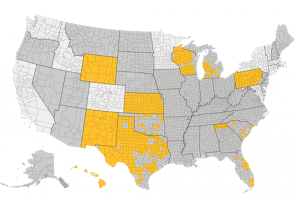All health insurance plans change every year: you’ve probably noticed that your prices go up, or that different things are covered from year to year. But sometimes, the rules surrounding health insurance plans also change, as they are set to in 2022. Next year, aside from the newly extended Open Enrollment Period and the Special Enrollment Period for low-income applicants, there will also be some updated rules and regulations for the ACA and the Marketplaces put into a document called the Notice of Benefit and Payment Parameters. Knowing what changes are coming next year will help you make an informed decision about your health insurance plan during the Open Enrollment Period.
Out-of-Pocket Maximum Capped

For 2022 health coverage, the out-of-pocket maximum, or the most you have to pay for covered services in a plan year, will be $8,700 for individuals, and $17,400 for a family. The only plans that this does not apply to are grandmothered or grandfathered plans, as well as short-term plans and fixed indemnity plans.
The proposed out-of-pocket cap for 2022 was originally $9,100 for individuals and $18,200 for families, but this was changed after the Department of Health and Human Services (HHS) listened to public comments. The HHS decided that they would lower the limits, with some health plans having out-of-pocket limits well below $8,700 for individuals. These plans include employer-based health plans and metal tiered plans for family and individuals.
And if you qualify for cost-sharing reductions, your maximum out-of-pocket limits will be even lower. You can receive cost-sharing reductions if your household income is no more than 250% of the poverty level and you select a Silver plan.
The out-of-pocket maximum for you plan depends on your household income; the new income levels and limits for 2022 are:
- If your income is between 100% and 200% of the poverty level, your out-of-pocket maximum will be approximately $2,900 for an individual and $5,800 for a family.
- If your income is above 200% but no more than 250% of the poverty level, your out-of-pocket maximum will be approximately $6,950 for an individual and $13,900 for a family.
A New Special Enrollment Period
If you lose your health insurance coverage because of a job loss, you qualify for a Special Enrollment Period (SEP), which allows you to buy a health insurance plan outside of the Open Enrollment Period. But what if you are on a government- or employer-sponsored COBRA plan? What happens when that plan ends? Well, if your subsidy ended on or after September 30, 2021, a SEP will open up to you. That means you now have the option to transition to a plan on the exchange after your subsidy ends; you can also receive the ACA’s premium tax credits if you are eligible based on President Biden’s new subsidy extensions.
If you need more information on the changes coming to plans for next year, or need help finding a plan during the Open Enrollment Period, an EZ agent can help you. We will provide you with a local licensed agent who will search all available plans in your area and find the best one for your medical and financial needs. We will also double check to see if you qualify for any subsidies to save you even more money. All of our services are done in minutes and at no cost to you. To get free instant quotes, simply enter your zip code in the bar above, or to speak to a local licensed agent call 888-350-1890.








